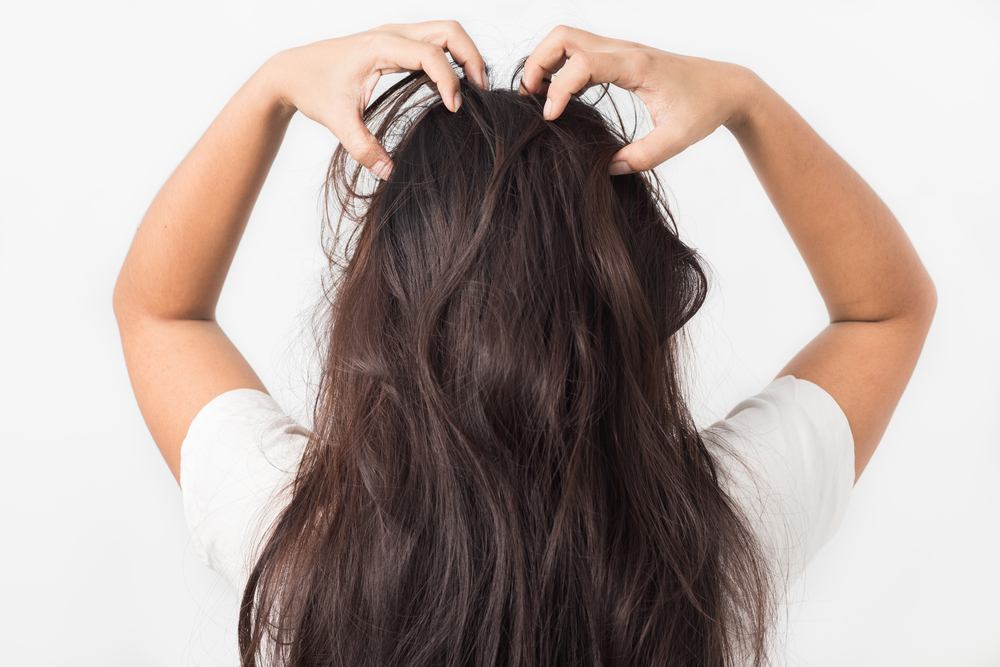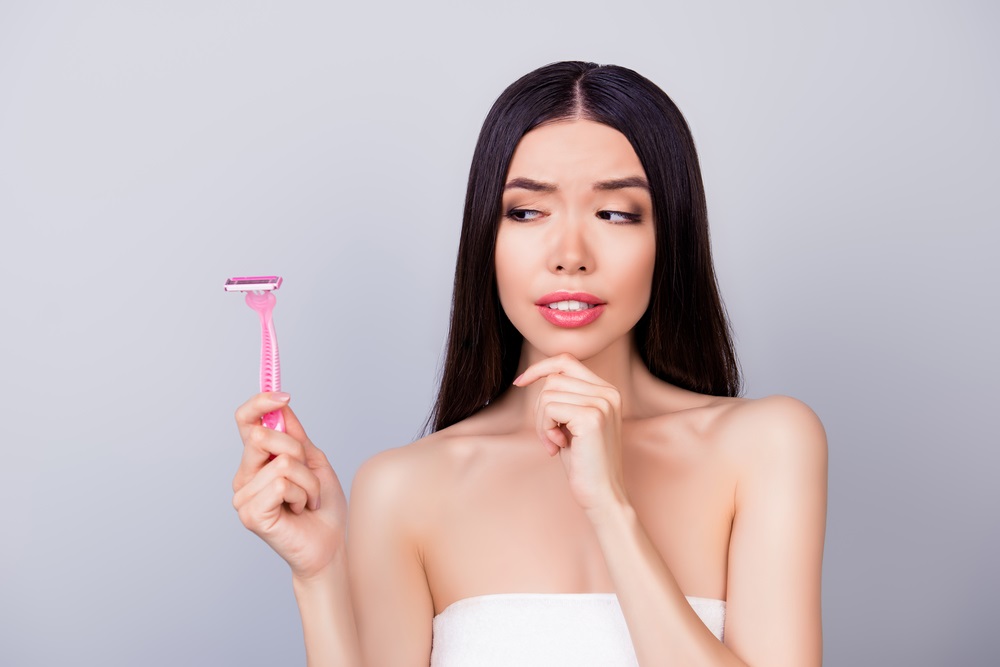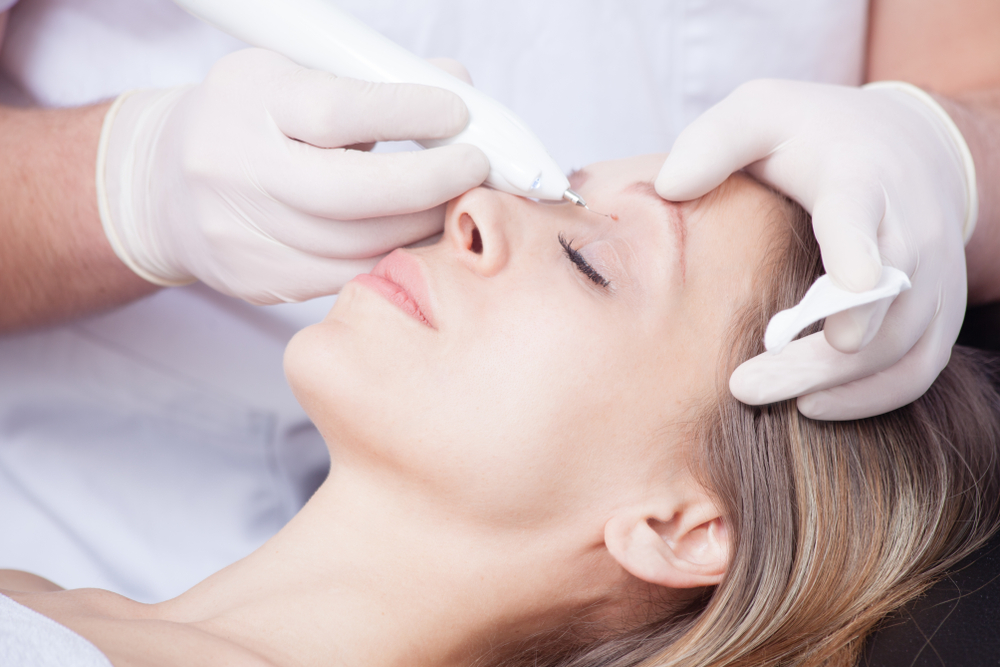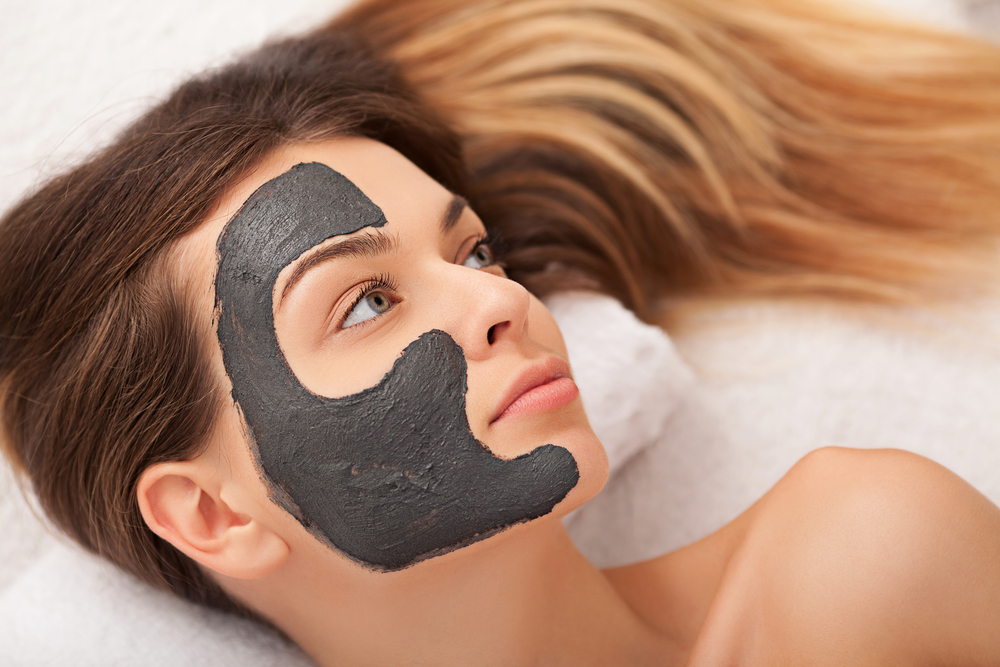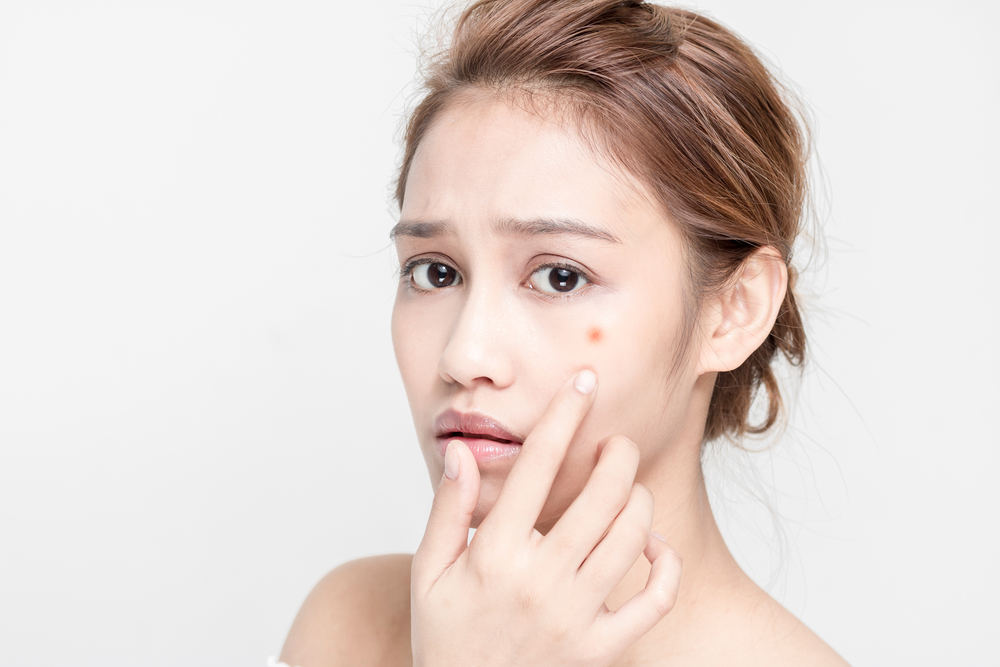- Scalp scabs are often a side effect of more serious medical conditions, or the direct result of itching irritated skin.
- Some causes of scalp scabs are highly contagious, making prompt diagnosis essential.
- While home treatments can help soothe the scalp, prescription antivirals or antifungals may be required.
What are scalp scabs?
Scalp scabs are flaky, itchy, and sensitive patches of skin beneath your hair. When you have them, it’s tempting to keep scratching or picking at your scalp, but that will only make the condition worse.
Administering the appropriate treatment for scalp scabs is challenging, since the condition can be caused by a wide variety of medical issues. Before scalp scabs can be treated, you must first work with your dermatologist to diagnose the root cause of the problem.
What causes scalp scabs?
Contact dermatitis
Contact dermatitis is an inflammation of the skin caused by external allergens. This allergic reaction can occur anywhere on the body that comes in contact with the irritant.
When contact dermatitis occurs on the scalp, it’s most likely caused by an allergic reaction to hair dye, shampoo, or head coverings. It’s also possible that the allergen responsible was transferred from a brush or comb.
In less common cases, it can also result from toxic foliage, like poison ivy, if that foliage comes in direct contact with the scalp.
This medical condition is characterized by inflamed or swollen skin that itches and burns. The scalp can also develop dry, flaky patches. If the area is continually scratched, it can cause bleeding, which in turn leads to scabbing.
Treatment for contact dermatitis starts with removing the allergen. Your dermatologist can help you determine what caused the condition with a patch or scratch test. In some cases, they may even try an intradermal test by injecting the allergen under the skin.
Once you’ve identified and removed the allergen responsible, it’s only a matter of time before your skin clears up on its own. The associated itching and burning can be effectively treated with warm compresses and shampoo formulated for sensitive skin. In more severe cases, your dermatologist may also prescribe a steroid.
Seborrheic dermatitis
This scalp condition is often referred to as dandruff. However, the exact relationship between seborrheic dermatitis and dandruff is unclear. Some medical professionals suggest that the two are similar, but unrelated conditions. Others state simply that seborrheic dermatitis can cause dandruff. For the purposes of this article, we’ll treat them as separate but related conditions.
Seborrheic dermatitis can occur on various parts of the body where sweat is produced and accumulates, such as the groin, armpits, and scalp. These sebaceous sweat glands secrete oil that coats the skin. This secretion is a natural response, and it’s not entirely clear why it irritates some people’s skin.
Although the exact cause of seborrheic dermatitis is unclear, some medical professionals cite stress, hormone fluctuations, and even the weather as possible triggers for the condition. They note correlations between this medical condition and others, such as diabetes and Parkinson’s disease.
Seborrheic dermatitis involves yellow and white patches or scales of skin. This skin becomes itchy and flaky, causing dandruff and potential scabbing.
Treatments include medicated shampoos that moisturize the skin and loosen the scales. In severe cases, a corticosteroid may also be called for to help control related itching. If dandruff occurs, specific shampoos used to treat dandruff can help reduce the flakiness and further control the itch.
These treatments alone will not cure seborrheic dermatitis, but they may help control symptoms and prevent secondary infection. It is possible the condition will eventually clear up on its own, but it could last for years.
» Learn more about dandruff, and the causes and treatment for a dry scalp
Scalp psoriasis
Psoriasis is an autoimmune skin condition that occurs when white blood cells attack healthy skin cells as though they were a disease. This triggers an overproduction of skin cells, leading to thick silvery patches of skin. Scalp psoriasis is simply psoriasis that affects the scalp, occurring in roughly half of all psoriasis sufferers in America.
Psoriasis can lead to itching, burning, and dry scalp. It may also result in hair loss. If you scratch the area, the large scales of skin can turn to genuine scabs and become increasingly inflamed.
Scalp psoriasis is not contagious. In most cases, sufferers have a genetic predisposition towards psoriasis and are vulnerable to certain triggers that can cause an outbreak, such as stress, injury, or infection.
Psoriasis has no known cure but can be managed with an effective treatment strategy. Treatment for scalp psoriasis is dependent on its severity. Mild cases can be managed with medicated shampoos that help to moisturize the area and control associated itching.
More severe cases may require topical or injectable steroids. Additionally, your dermatologist may suggest biologics to help control flare-ups.
Lichen planopilaris
Lichen planopilaris, also known as follicular lichen planus, is a specific form of lichen planus that affects the scalp. As with psoriasis, this inflammatory autoimmune disorder occurs when the immune system attacks healthy skin cells.
Lichen planopilaris causes red and purple bumps on the skin that may blister and itch. When these blisters break, they lead to scabs. Those with lichen planopilaris may also notice smooth white patches and redness around the hair follicles.
Hair loss is a common complication of the condition, as associated scarring prevents new hair growth on the scalp.
This condition is commonly accompanied by traditional lichen planus, which causes similar bumps and blisters on other parts of the body. It also leads to nail loss, white patches on the inside of the mouth, and genital ulcers.
Lichen planopilaris sometimes clears up on its own. However, it’s important to have it diagnosed and treated promptly by a medical professional. Treatments can’t recover hair loss and the condition could return spontaneously, lasting for years.
Treatment typically includes topical, oral, or injectable steroids to manage inflammation. Your dermatologist may also suggest antihistamines to manage itching and prevent further damage to the scalp.
Shingles
Shingles, also known as herpes zoster, are caused by varicella-zoster, the same virus that gives us chickenpox. Once you’ve had chickenpox, the virus remains dormant in your system. If this virus is reactivated, shingles will develop.
It’s unclear what causes the varicella-zoster virus to reactivate. Some medical professionals cite weakened immune systems and old age as possible risk factors. However, other research has shown that most recurrent attacks occur in otherwise healthy individuals.
Shingles cannot be contracted by other people. However, they are still contagious. If you’ve never had chickenpox before, then you can catch the varicella-zoster virus from someone with shingles. However, you would contract chickenpox, not shingles. For this reason, it’s important for people with shingles to avoid children and other individuals unlikely to have been exposed to the virus in childhood.
Unlike chickenpox, which is widespread across the body, shingles only affects small areas of skin, which may or may not include the scalp.
The condition is characterized by an itchy red rash, blisters, or large crusted patches of skin. Itchiness can lead to scabs when the blisters or skin are broken.
Shingles rashes are painful and often accompanied by headache, weakness in the facial muscles, and fever. They are typically treated with antiviral medication to deal with the underlying virus. However, treatment often also includes pain medications and topical creams to manage the associated symptoms.
The condition usually lasts for approximately 3-5 weeks. However, further recurrences can occur, and some complications of shingles may be permanent.
Ringworm of the scalp
Despite the name, ringworm is not a worm at all, but rather a fungal infection that can affect the skin, scalp, and hair follicles. When it affects the scalp, it’s known as tinea capitis, or ringworm of the scalp.
Ringworm in all its forms is highly contagious. Contact with an infected person or animal is a major risk factor for getting the disease. However, you can also contract ringworm simply by touching something that an infected person touched. Ringworm is most common among children.
The condition is characterized by itchy red scales on the scalp. These scales are round in appearance, giving the condition its name.
If left untreated, these scales can become inflamed, causing them to enlarge. As this happens, hair becomes brittle and falls out. It may also lead to scarring of the scalp and subsequent permanent hair loss.
Ringworm is treated with antifungal medications. Medical shampoos or creams may also be called for to treat the itch and help prevent the condition from spreading.
Given the highly contagious nature of the disease, you’ll want to clean or purge potentially infected items. This means throwing out combs and brushes and sterilizing all laundry that may have come into contact with ringworm. You’ll also want to check pets and family members for signs of infection.
» Learn more about ringworm, as well as natural and medical treatments to get rid of the fungal infection
Head lice
Like ringworm, this infestation of parasites is highly contagious and common among children. Head lice, although extremely small, are still visible to the naked eye. An adult louse is roughly the size of a sesame seed. Their eggs are smaller, but may still be visible in hair shafts.
Given that head lice are so small and avoid the light, they can be difficult to diagnose. As the condition progresses, their presence becomes much more obvious. You may even be able to feel them moving on your scalp.
Head lice are extremely itchy, so much so that the itching itself can break the skin and lead to scalp scabs. If the damage to the scalp is bad enough, a secondary infection could also develop.
There are several over-the-counter medications that deal specifically with head lice. These medications are typically administered twice. The first round of treatment kills the adult lice, but not recently laid eggs. A second round of treatment conducted roughly nine days later takes care of the remaining lice after they’ve hatched.
Just as with ringworm, it’s important to replace brushes and combs and sanitize all clothing and bedding to prevent reinfection.
Home treatment
There are some safe treatments for managing scalp itch and pain at home. However, you should first talk to your dermatologist about your scalp scabs to rule out more serious medical conditions. In many of the above cases, specific pharmaceutical action such as antivirals or antifungals are required.
In the meantime, the following steps will help prevent further irritation and discourage itching:
- Warm compress — Keeping the scalp moist and warm will help prevent itching.
- Gentle shampoo — Use shampoo for sensitive skin and shampoo less often.
- No hair dyes — Hair dye and bleach will only further irritate the scalp.
- Shampoo less often — Consider shampooing just a few times a week. During baths or showers, you can simply wet your hair.
Some oils or gels, like aloe vera, are often recommended to soothe the scalp. While these home remedies may be effective methods for treating scalp itch, it’s recommended that you speak with your dermatologist before pursuing any form of home remedy. After all, an allergic reaction to oils could lead to contact dermatitis, a condition that causes scalp scabs all on its own.
Finally, the number one thing you can do is stop scratching your scalp. Further irritation from touching or picking at the affected area will only serve to prevent healing.





